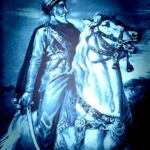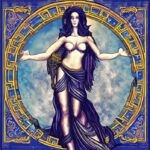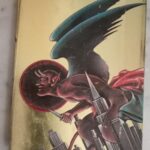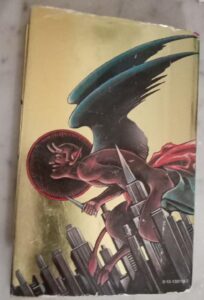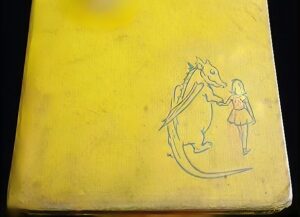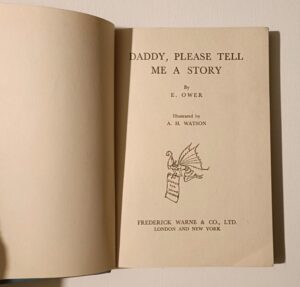Occult Books in The Ninth Gate
The Ninth Gate, directed by Roman Polanski, is a film steeped in themes of occultism and bibliophilia. Let’s discover all the books real and less real of this extraordinaire movie.
Central to the narrative of The Ninth Gate is the fictional book The Nine Gates of the Kingdom of Shadows, attributed to the fictional author Aristide Torchia. This book, allegedly written in 1666, contains nine engravings said to be created by Lucifer himself, holding secrets that can summon the Devil. Three copies exist, each with variations in engravings signed by both Torchia (AT) and Lucifer (LCF), creating a rich tapestry of esoteric knowledge and high intrigue.
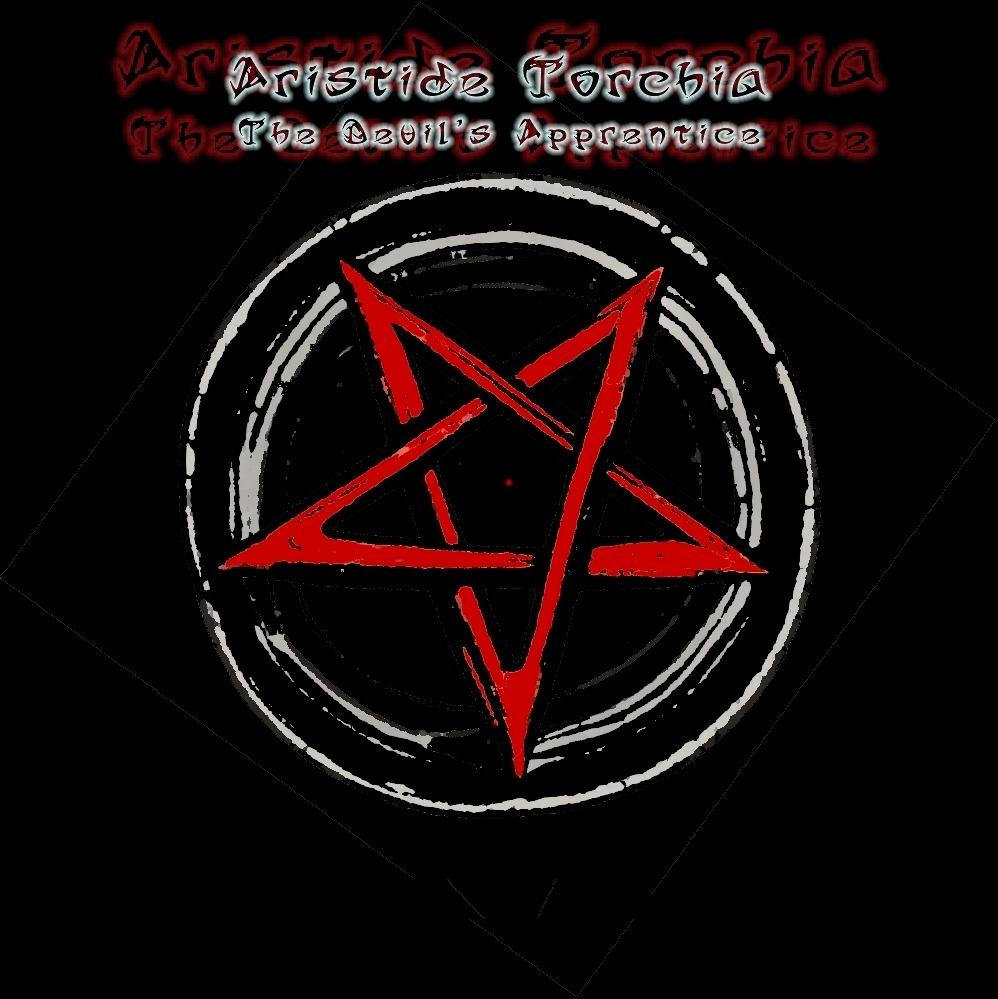
While both the book by Torchia and his biography were initially fictional creations by Arturo Pérez-Reverte and Roman Polanski, a new development has emerged. A biography titled Aristide Torchia, The Devil’s Apprentice has been published on Amazon, adding a new layer of depth to the mystique surrounding Torchia. This biography, though not entirely based on historical fact, offers an imaginative exploration of the life and legend of Torchia, further enriching the narrative universe of The Ninth Gate.
Let’s delve into the world of books featured in the movie, exploring how to collect decent editions without succumbing to the allure of the occult.
* * *
Dictionnaire Infernal by Jacques Collin de Plancy is a 19th-century work catalogs various demons and is referenced in the film as part of the occult collection. It serves as a post-Enlightenment examination of superstition and demonology.
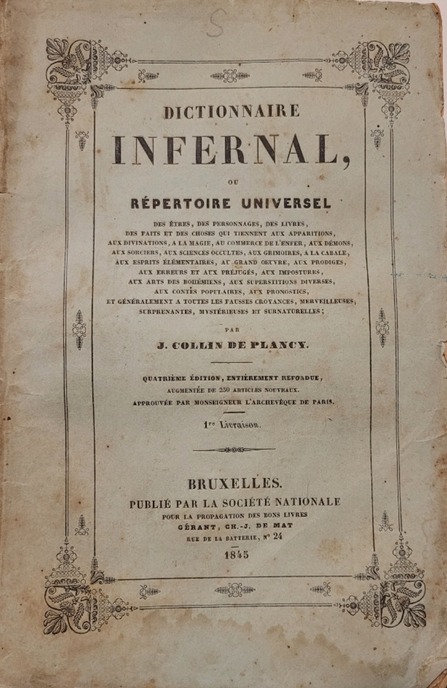
It’s impossible for common mortals to own the original copy, although having money you can still buy one at a very high price. We just opted for a more modest copy of his dictionary of Witchcraft, published in 1965 by the Philosophical Library,
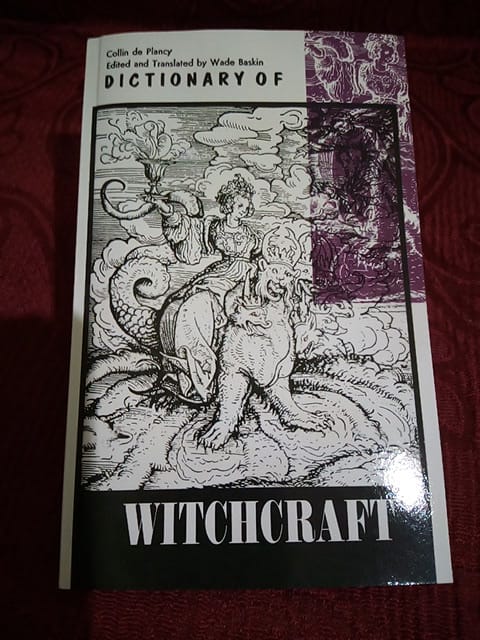
* * *
Compendium Maleficarum by Francesco Maria Guazzo, a witch-hunter’s manual written in Latin by Francesco Maria Guazzo, was first published in Milan in 1608. This comprehensive guide explores witches’ pacts with the devil, detailing their powers and poisons. It also includes Guazzo’s classification of demons, drawing from earlier works by Michael Psellus.

Together, these volumes provide a profound understanding of the historical context and practices surrounding witchcraft during the Renaissance.
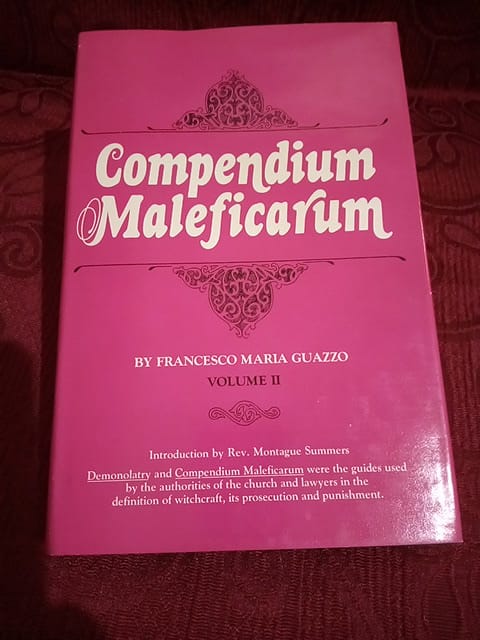
It is Volume II, and with Volume I have been published by University Books (Secaucus, NJ), in 1974 as Hardcovers with Dust Jackets. Volume I’s author is Nicolas Remy, also mentioned in the movie.
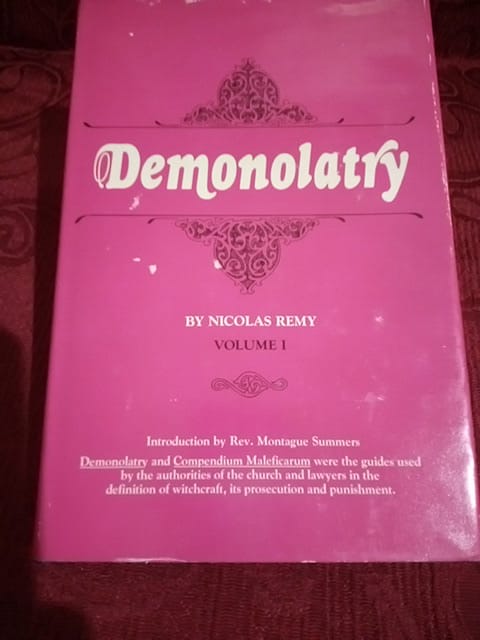
Demonolatry, written by the notorious French magistrate Nicolas Remy, is a seminal work on demonology and witchcraft. First published in 1595, it was the leading handbook of its time, defining the black arts and guiding civil and religious authorities in the persecution and punishment of accused witches.
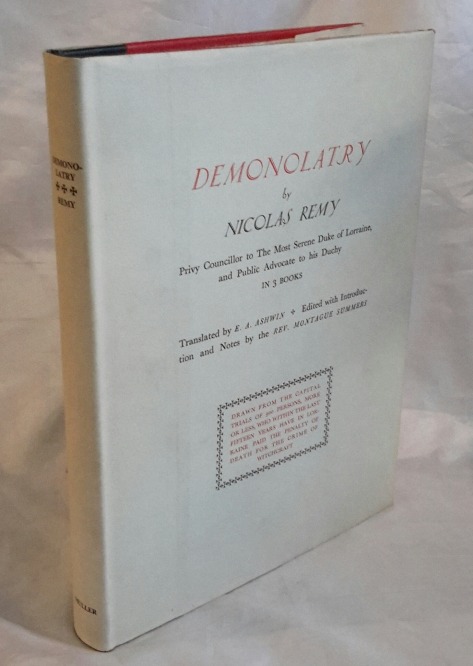
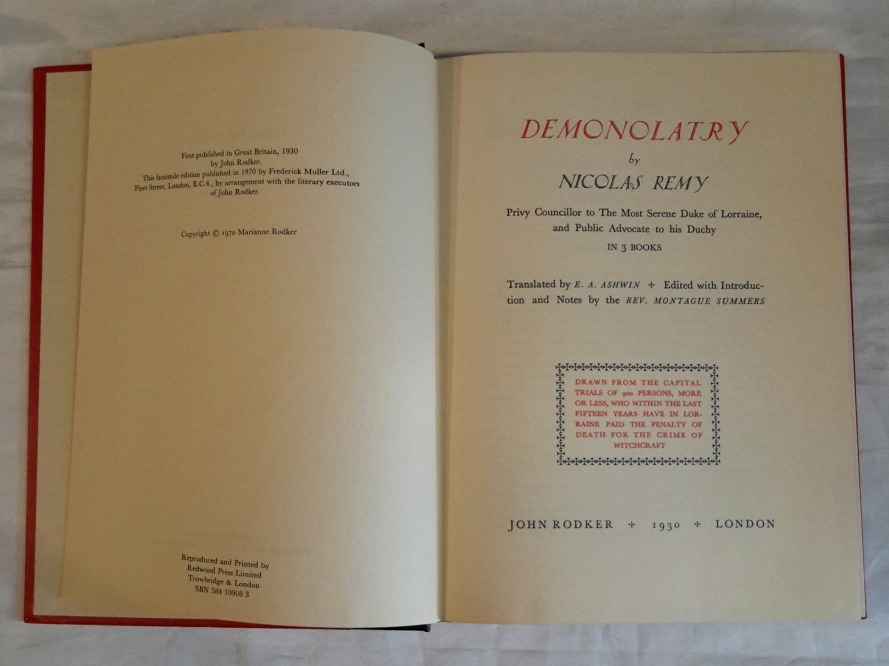
The book is subtitled “Drawn from the capital trials of 900 persons, more or less, who within the last fifteen years have in Lorraine paid the penalty of death for the crime of witchcraft.” Translated from Latin by E.A. Ashwin and edited with an introduction by Montague Summers, a renowned occult scholar, this volume offers a historical insight into the witch hunts of the 16th century.
* * *
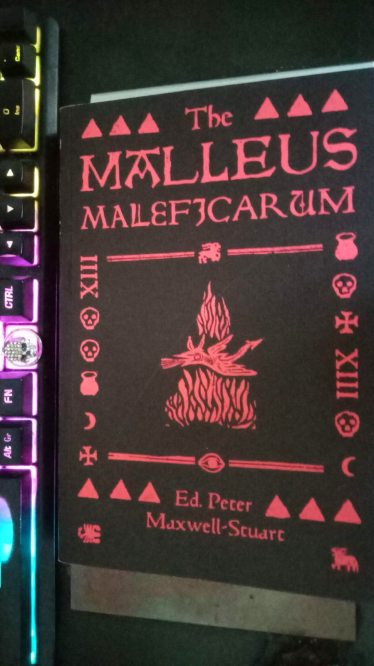
The Malleus Maleficarum is a seminal medieval treatise on witchcraft written by Heinrich Kramer (also known as Heinrich Institoris) in 1487, known as The Hammer of Witches, this infamous witch-hunting manual from 1519 is mentioned as part of the broader context of witchcraft and demonology that permeates the film. We do not own any copy of this classic gem in this genre, however there is a version by Peter Maxwell-Stuart that in my opinion, and not only mine, overpasses the Montague Summer’s one. Indeed Peter Maxwell-Stuart’s edition provides a clear and readable translation of this influential document, correcting inaccuracies found in earlier translations, such as Montague Summers 1928 version. Maxwell-Stuart’s Edition offers a more accurate and unbiased translation compared to earlier versions, ensuring that readers can engage with the original text without the influence of personal agendas. Includes an introductory essay that sets the context of late-medieval Europe, providing historical background essential for understanding the treatise’s significance.
* * *
Hypnerotomachia Poliphili by Francesco Colonna, more than a Renaissance text. A strange journey filled with allegorical content, serves as an inspiration for Torchia’s fictional work in our biography about him. Its complex narrative about love and dreams parallels the mystical elements found in The Ninth Gate. We own an edition from significative year 1999 by Thames and Hudson
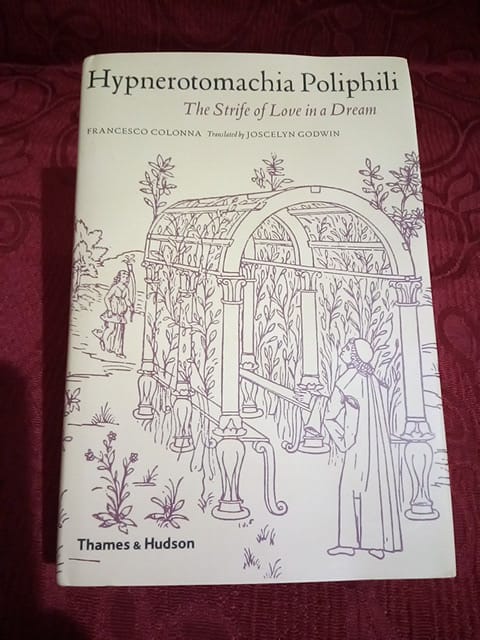
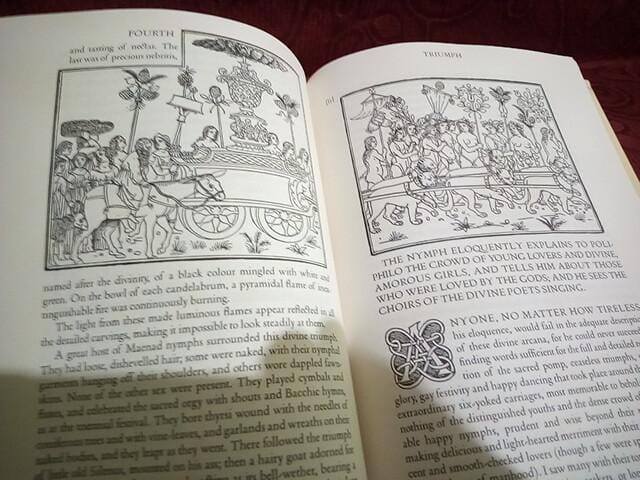
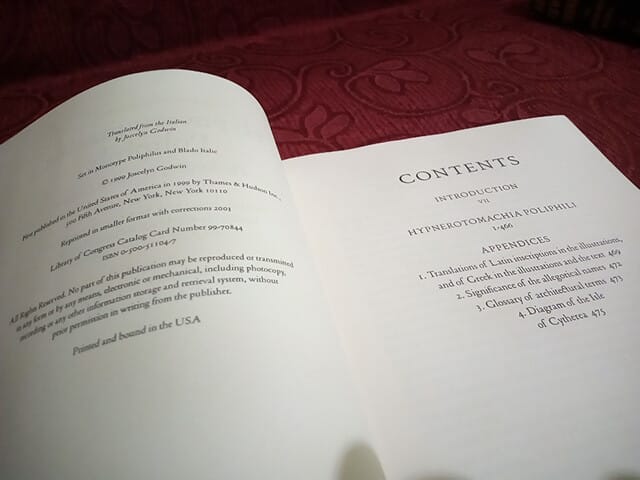
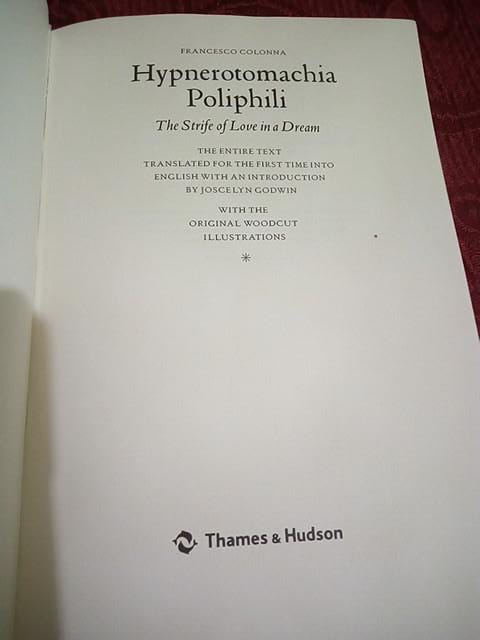
This edition value can be estimated up to 250,00 € .
* * *
For some reason I sensed that the book Ouevre Chymique by Bernard Le Trevisan is seen or mentioned in this movie.
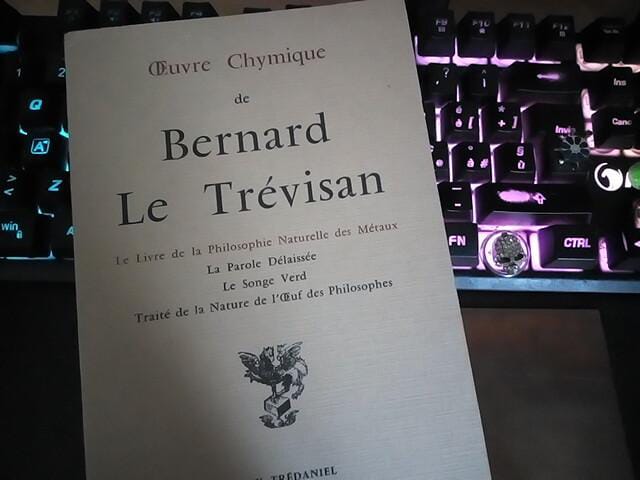
Bernard Trevisan (1406–1490), a figure shrouded in myth, exemplifies the extremes of alchemical pursuit. Born into wealth, he squandered his inheritance on experiments involving mercury, eggshells, human excrement, and vinegar, often guided by dubious mentors. His methods, rooted in medieval alchemy, blended mercury-centric theories with organic symbolism, though his legacy is now recognized as a composite of historical and fictional elements.
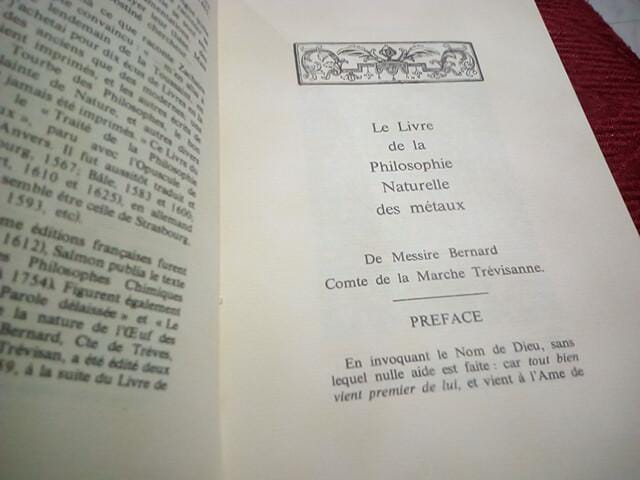
Trevisan rejected sulfur-mercury duality, insisting mercury alone could transmute metals. He calcined mercury, believing it contained all four elements, and attempted to replicate natural metal generation through purification.
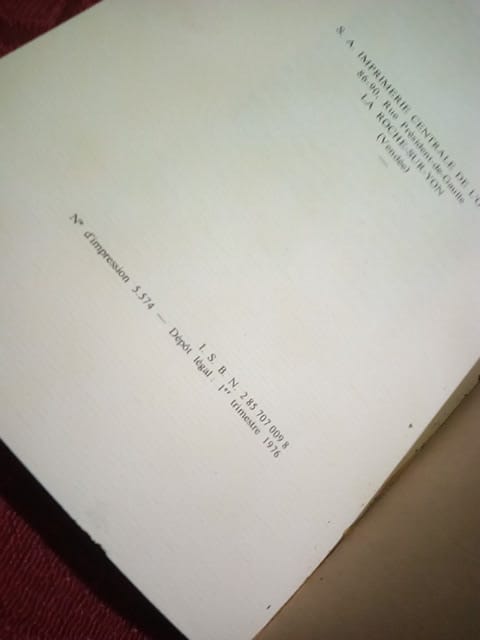
He used the philosopher’s egg metaphor, burning eggshells and putrifying yolks in horse manure to extract “white and red waters”. Later experiments involved human blood and urine, reflecting alchemy’s cross-disciplinary analogies. Prolonged exposure to toxic fumes (e.g., aquafortis) left him with severe illnesses, including a near-fatal quartan fever. Despite failures, he persisted, traveling Europe and the Middle East, convinced an adept held the secret.
Trevisan’s biography conflates Bernard of Trier (d. 1387) with later alchemical myths. Sixteenth-century texts attributed works like Traicté de la nature de l’oeuvf to him, though these likely emerged from editorial compilations. His story underscores alchemy’s blend of science, spirituality, and deception, influencing figures like Gilles de Rais.
Though Bernard le Trévisan is a fictional figure created by 16th-century editors, the alchemical texts attributed to him reflect Renaissance-era doctrines.
Œuvre chymique refers to several works compiled under his name, including:
###Traicté de la nature de l’œuf des philosophes
Featured in collections like Œuvre chymique de Bernard le Trévisan (1976), this text describes the philosopher’s egg as a central symbol of the Great Work. It blends experimental methods (purifying egg yolks in horse manure) with vegetative analogies, where the egg represents the synthesis of opposites (fixed/volatile, masculine/feminine).
###La Parole délaissée
Attributed to Trévisan, this treatise explores alchemical principles through allegories and references to authorities like Albertus Magnus. It emphasizes purifying the prima materia (often mercury) to attain the philosopher’s stone.
###Le Songe verd
This visionary text combines autobiographical narratives and alchemical symbolism. It recounts initiatory journeys and encounters with adepts, reflecting the spiritual-material quest central to medieval alchemy.
###Editorial Context
These works were incorporated into anthologies like the Theatrum Chemicum (1602–1661), a major Renaissance alchemical corpus. Editors such as Gerard Dorn attributed anonymous or composite texts to Trévisan to legitimize their tradition.
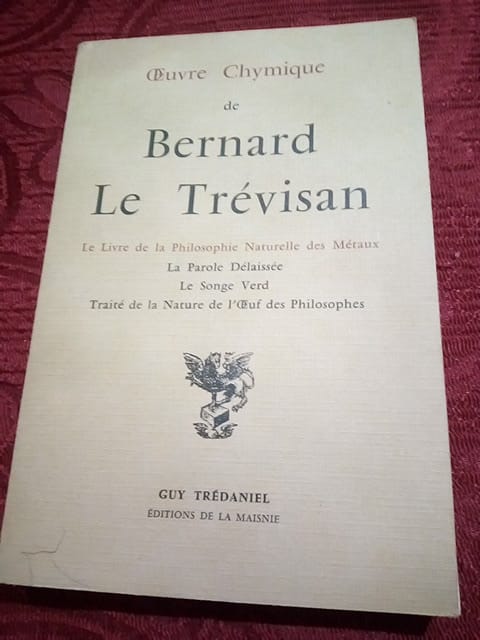
* * *
Jean Bodin, french jurist and demonologist, published La Démonomanie des Sorciers (often referred to as Démonologie des Sorciers) in 1580, a treatise on witchcraft and demonology that became influential during the witch hunts of the late 16th century.
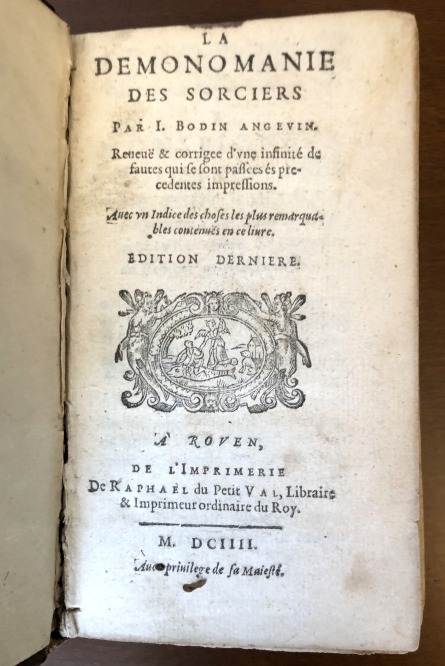
Publication: 1580, Lyon, France.
The book outlines Bodin’s beliefs about witchcraft, including the idea that witches made pacts with the Devil, attended sabbats, and performed harmful magic. It also provided guidelines for identifying and prosecuting witches. Bodin’s work contributed significantly to the legal and cultural framework of witch trials in Europe during this period.
It’s almost impossible to own a decent old copy.
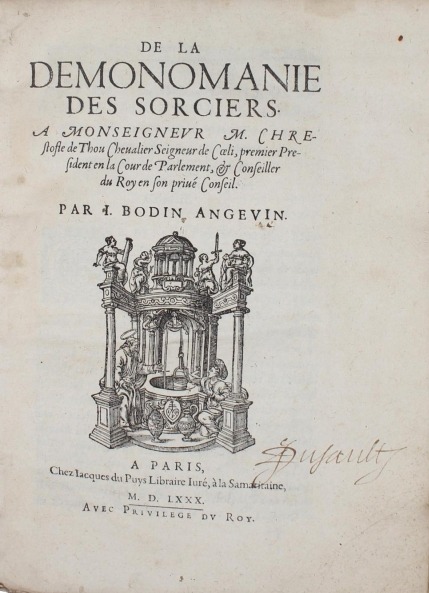
* * *
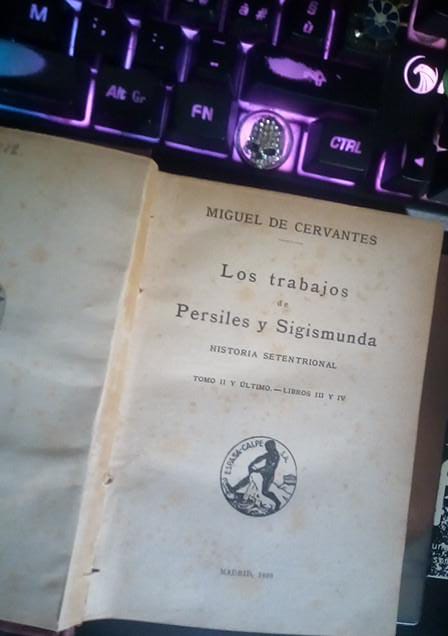
Los Trabajos de Persiles y Sigismunda by Miguel de Cervantes, a lesser-known work by Cervantes, no less important, appears in the first scene, at once emphasizing Corso’s deep engagement with rare texts.
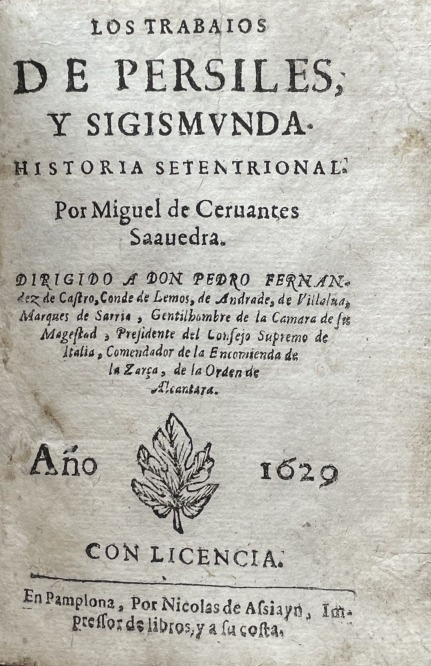
Sin embargo, this book does not directly delve into occult or esoteric themes in the same way as works explicitly focused on magic or mysticism.
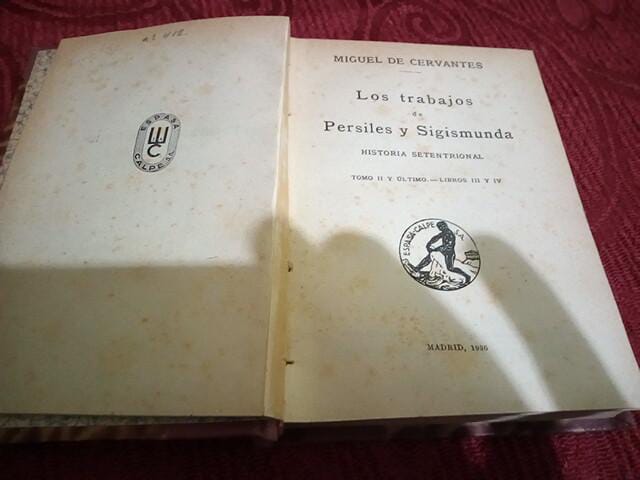
However, it explores themes of alterity and exoticism, which can be tangentially related to esoteric interests.
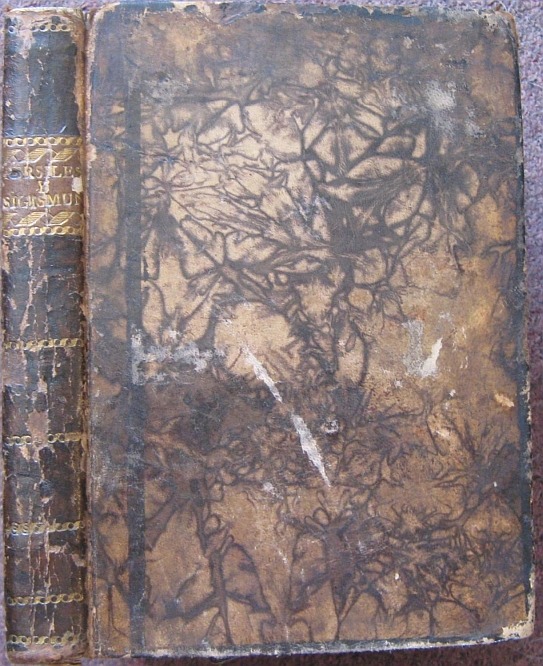
The novel uses travel and encounters with unfamiliar cultures and characters to explore the boundaries between the known and unknown, which can be seen as a form of esoteric exploration of human nature and the world.
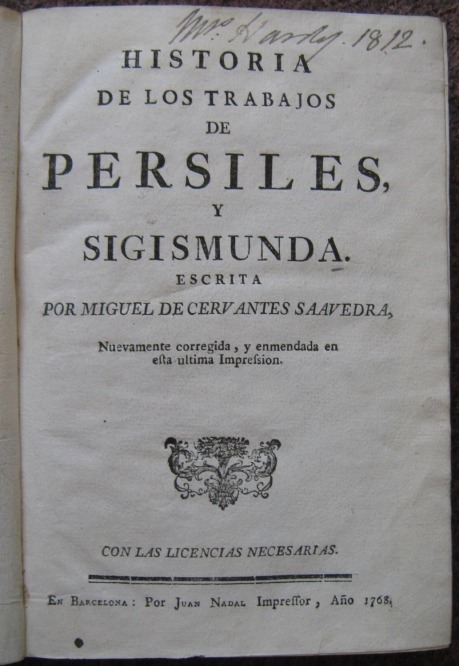
* * *
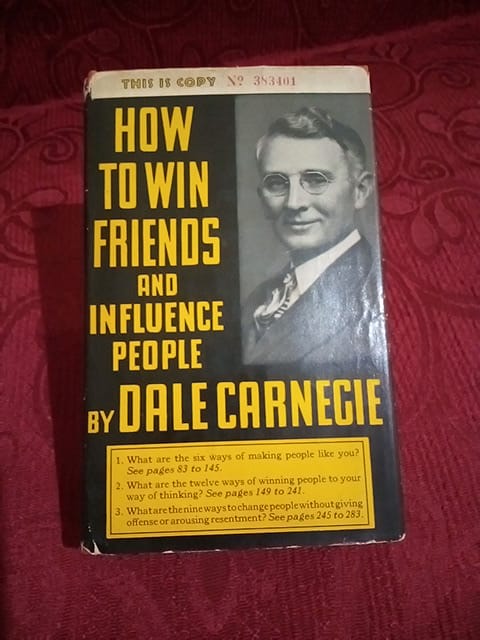
The mysterious woman who protects Corso and should represent Babylonia reads the book How to Make Friends and Influence People, a tome also used by Charles Manson who orchestrated the tragic killing of director Roman Polanski’s wife, Sharon Tate.
How to Win Friends and Influence People by Dale Carnegie is a self-help book that has been widely influential, but it also has a darker association due to its use by Charles Manson. Manson, who orchestrated the tragic murder of Sharon Tate, the wife of director Roman Polanski, among others, took classes based on Carnegie’s book while in prison. He reportedly used the techniques from the book to manipulate others and build his cult following, known as the “Family”.
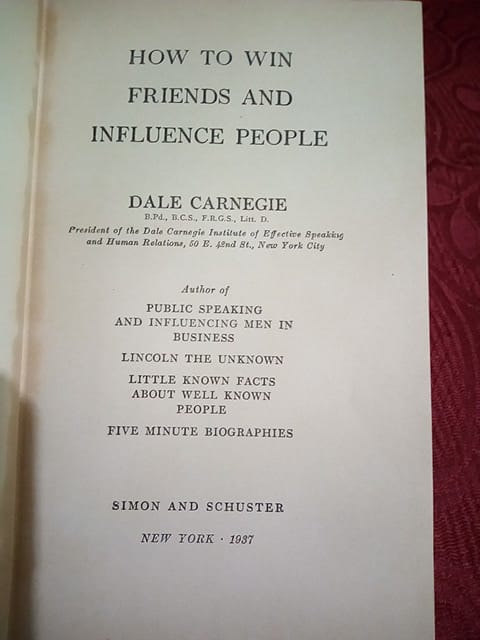
The book itself provides practical advice on building relationships and influencing others, focusing on principles such as genuine interest in people, active listening, and making others feel important. However, when used with manipulative intent, these techniques can be exploited for harmful purposes, as seen in Manson’s case.
While the book has helped many people improve their interpersonal skills, its association with Manson highlights the potential for its principles to be misused for malevolent ends. Despite this, How to Win Friends and Influence People remains a popular and influential work in the self-help genre, with many readers benefiting from its advice in a positive context.
* * *
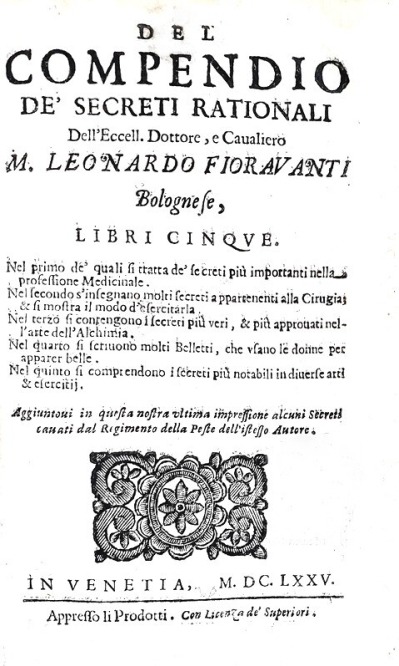
“Del Compendio de’ secreti rationali” by Leonardo Fioravanti is a collection of pharmaceutical and alchemical remedies and secrets, written by one of the most peculiar figures of Renaissance medicine. The book is divided into five parts, covering various aspects of medical and alchemical knowledge:
First Book: Focuses on the most important secrets in the medical profession.
Second Book: Teaches many secrets related to medical practices.
Fifth Book: Includes notable secrets in diverse arts and exercises.
The book was first published in 1564 by Vincenzo Valfrisii and later editions were printed in the late 16th century, such as the 1597 edition published in Venice by Sessa. Fioravanti’s work is considered a classic “book of secrets,” reflecting his experiences as a physician and surgeon during his time in Venice.
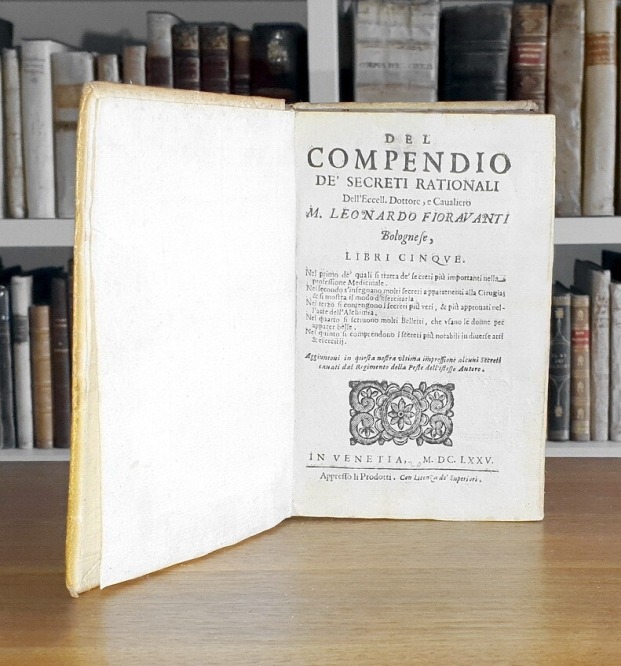
Del Compendio de’ secreti rationali is mentioned in Roman Polanski’s movie, it represents a significant work in the history of Renaissance medicine and alchemy, offering insights into the esoteric and practical knowledge of the time. It is almost impossible to own a decent copy even of the last century.
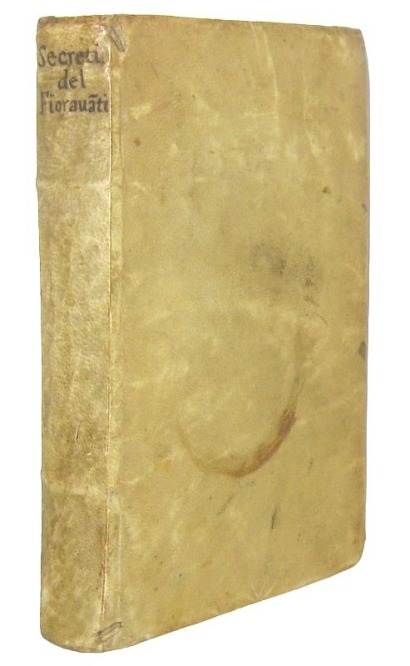
########Additional Notable Mentions
“Don Quixote de la Mancha” by Miguel de Cervantes is directly mentioned in the context of “The Ninth Gate” as a special edition of “Don Quixote”, specifically Ibarra’s 1780 edition, noted for its significance in the world of rare books, which aligns with the bibliophilic themes present in the movie.


